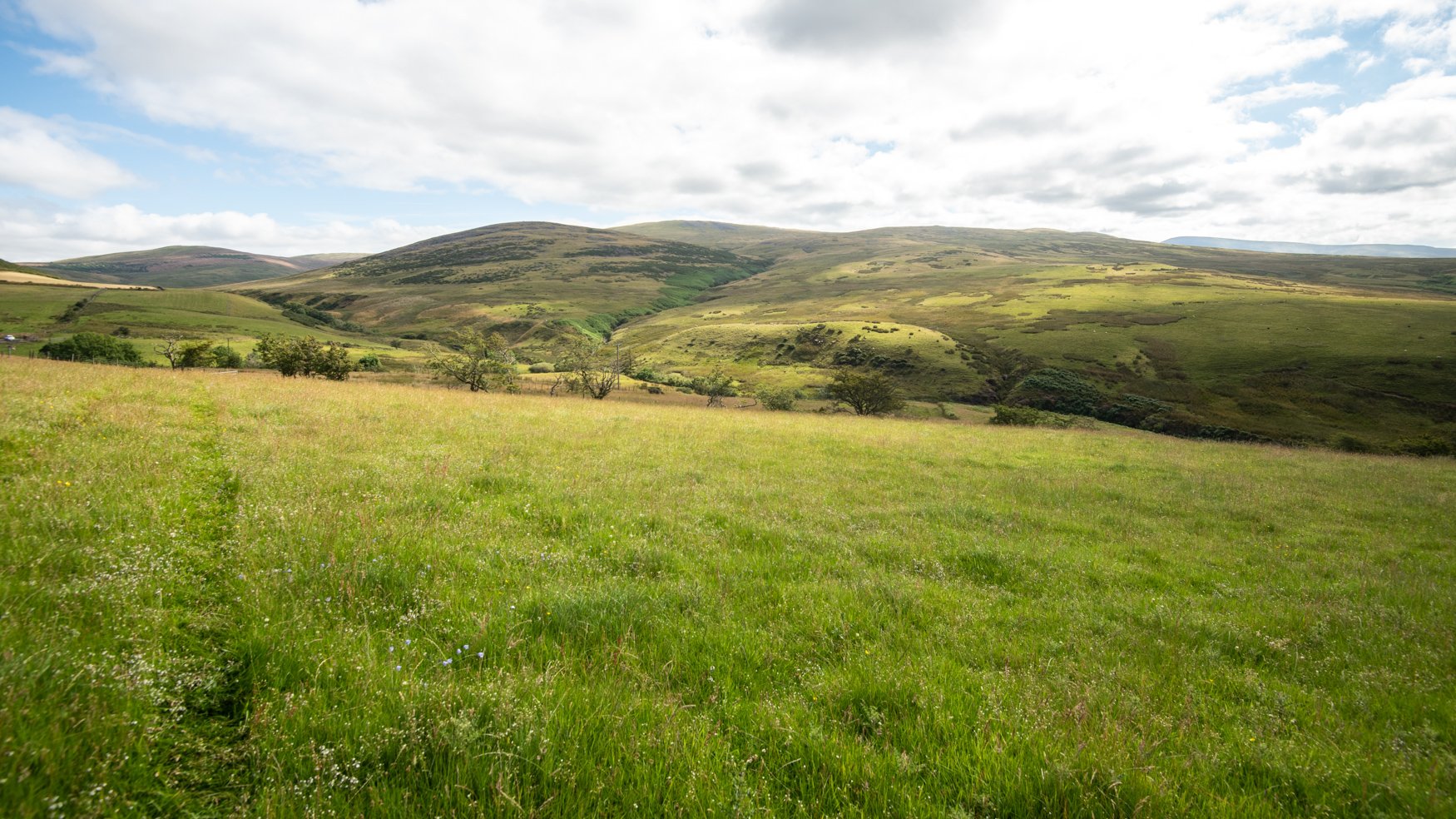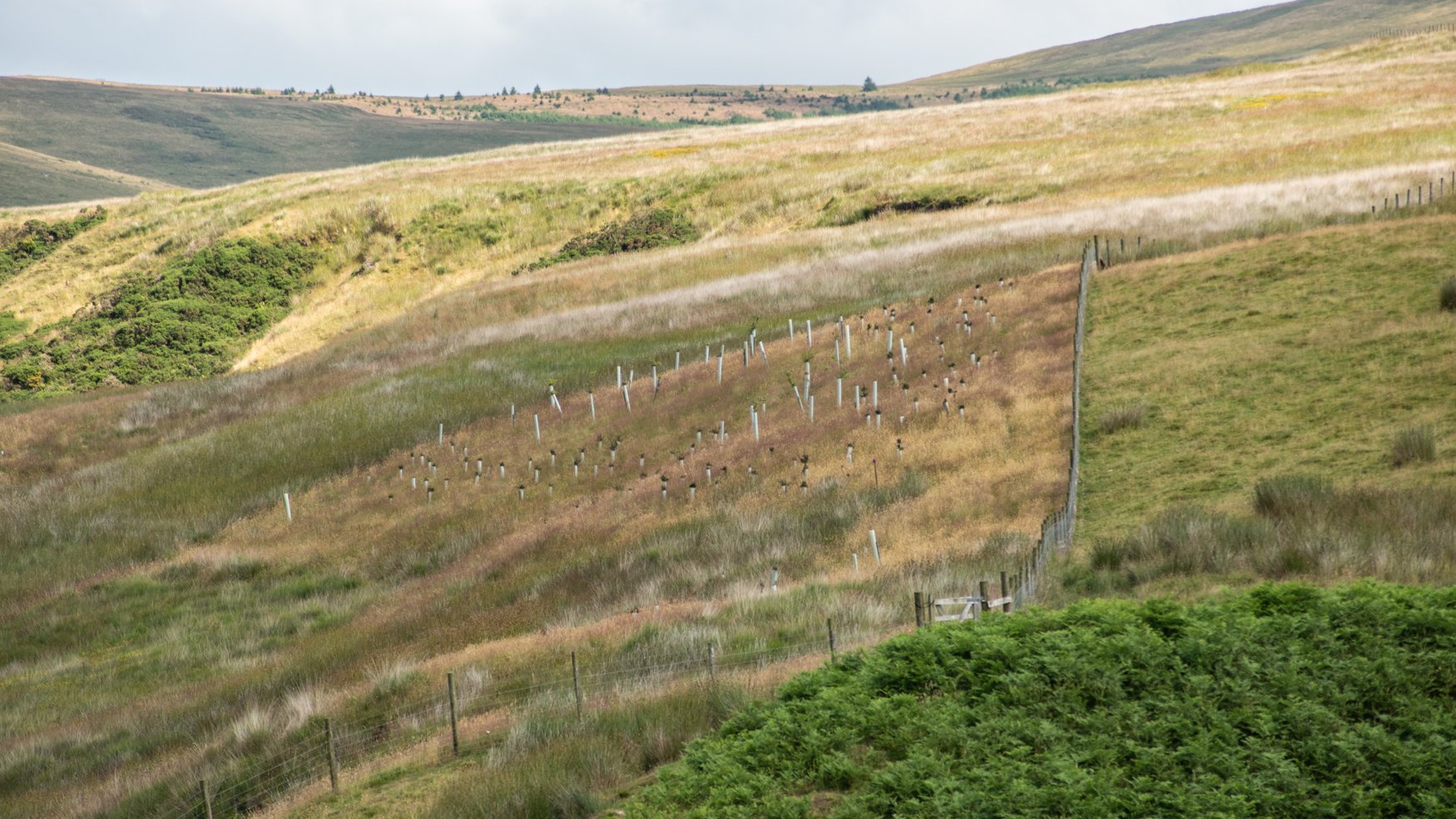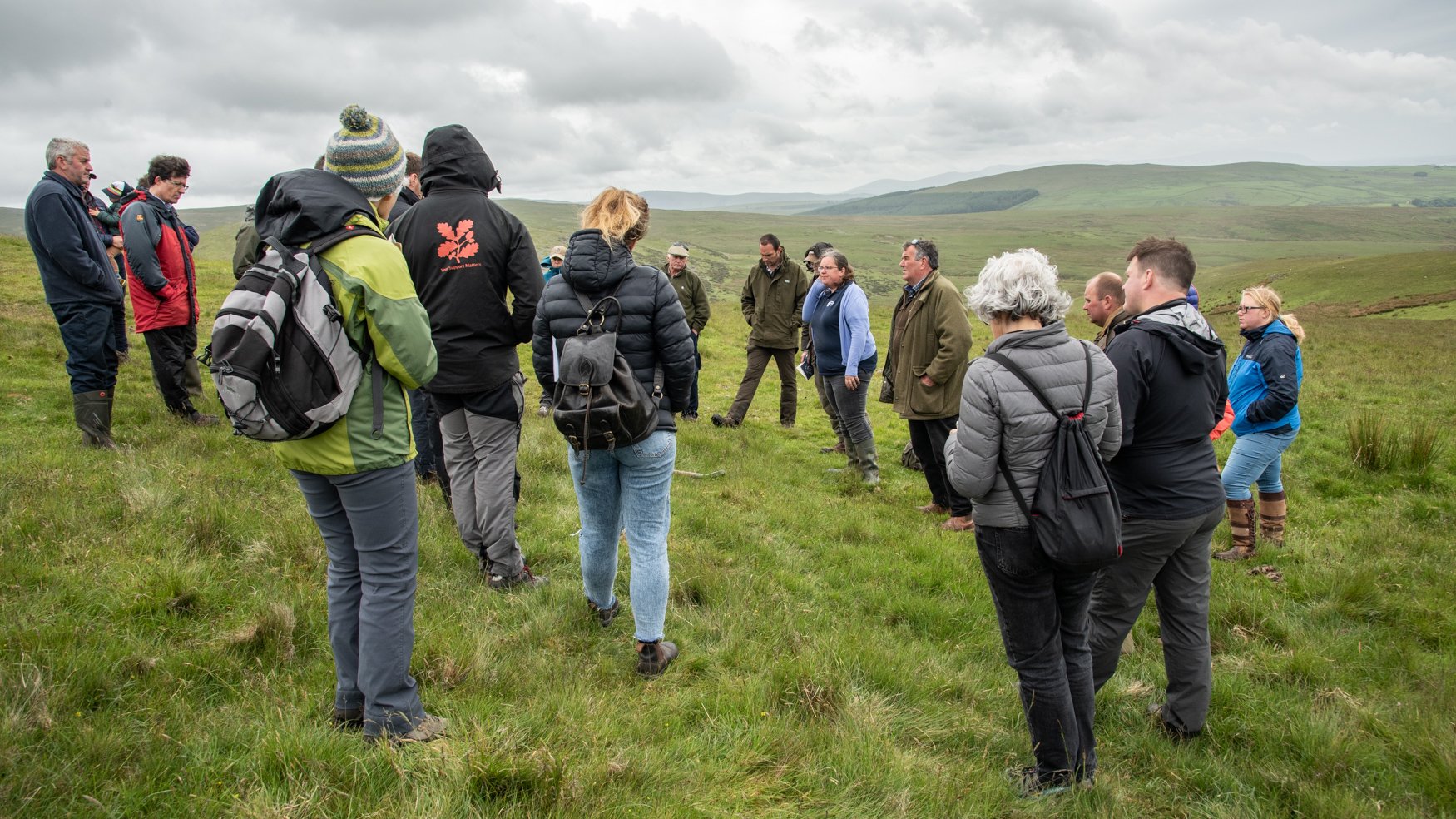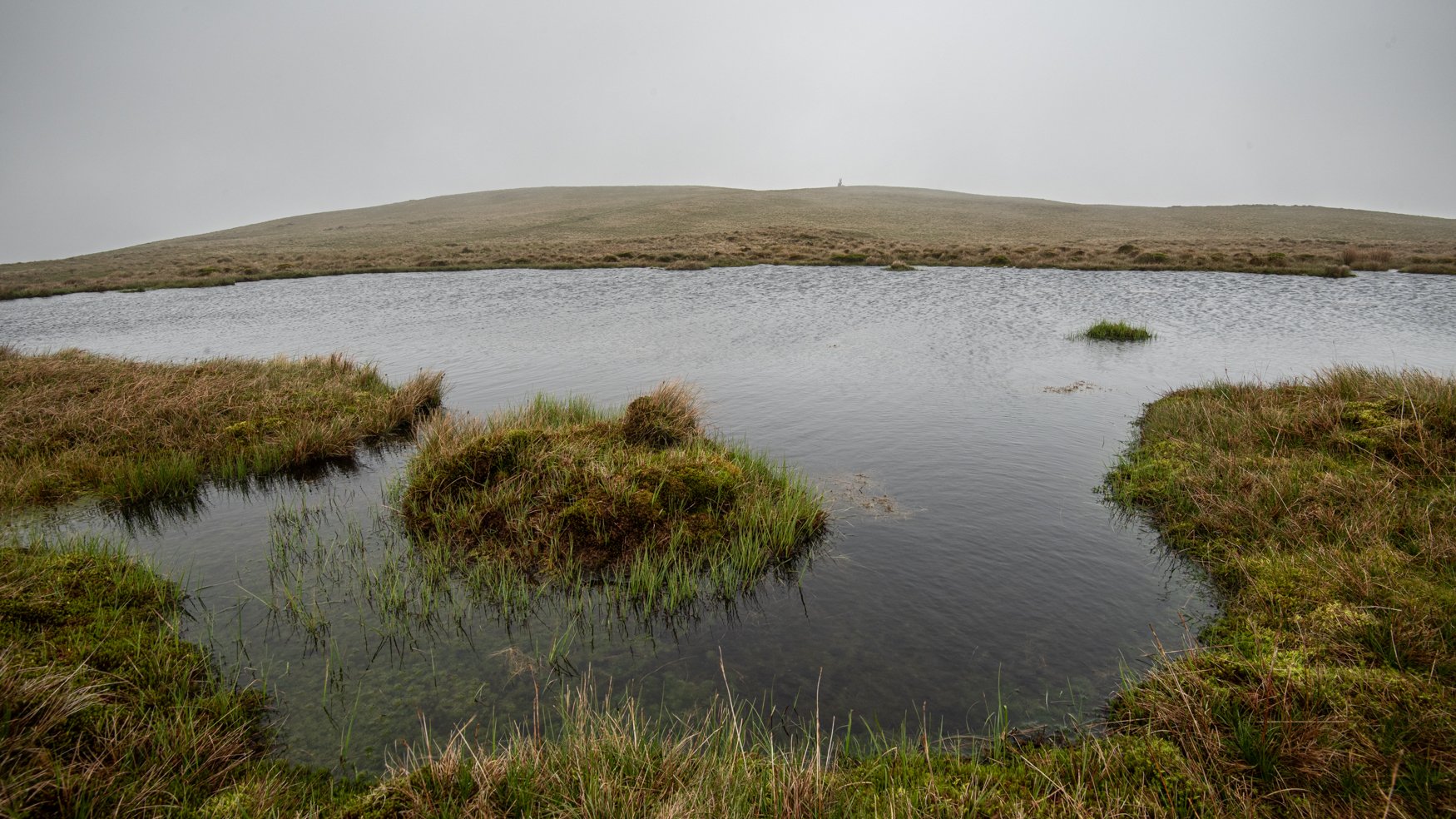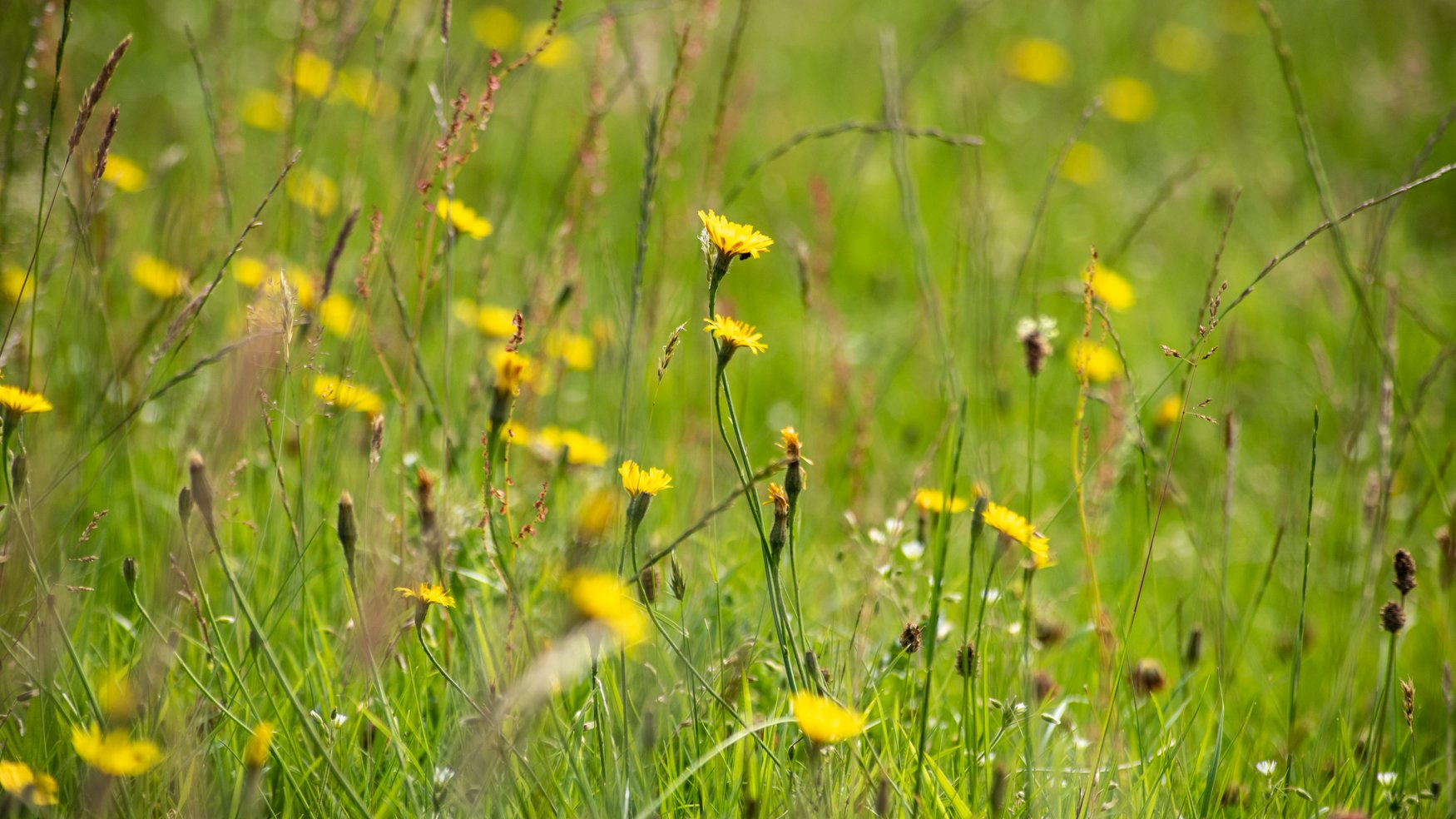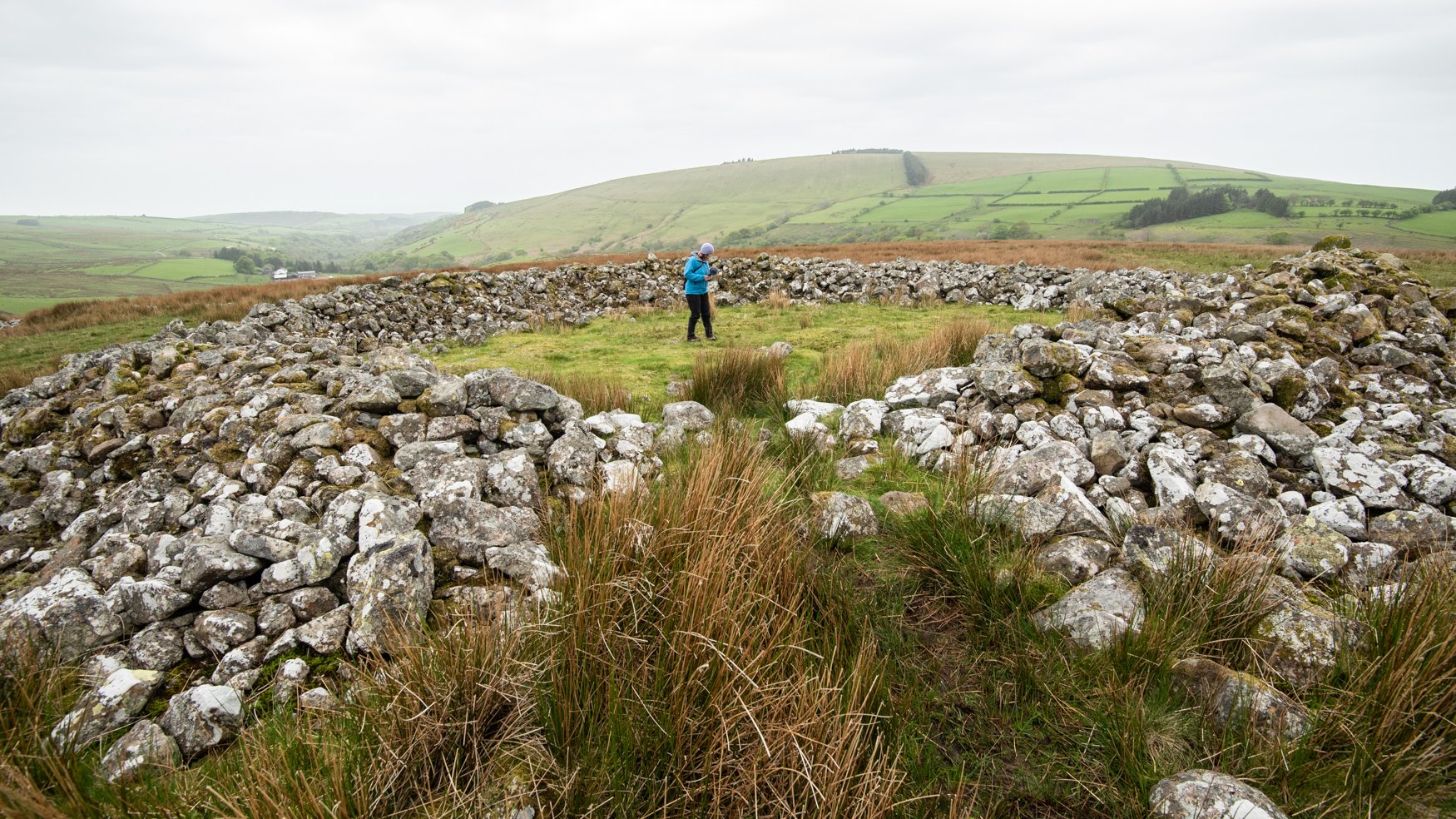Farmer-led Nature Recovery: West Lakeland CiC
Bringing farmers together on a landscape scale
On the west coast of Cumbria, farmers have formed West Lakeland CiC to develop landscape-scale learning and collaboration in support of sustainable upland farming. Helen Race, who is one of four facilitators, took time out to talk to us about the journey so far.
‘West Lakeland CiC was formed in 2021. The idea behind the CIC was that if we can work together across the landscape, rather than as individual farms, we could benefit more and the environment could benefit more. If we could, together, come up with an idea of how to create a sustainable farming system, that could perhaps be used as a model for the future or for other upland landscapes.’
“... if we can work together across the landscape, rather than as individual farms, we could benefit more, and the environment could benefit more.”
Hands on: Helen Race with a sod of earth on Kinniside Common during a discussion about soil health
The CiC has been set up with funding from Defra (Farming in Protected Landscapes) and the Lake District National Park Authority. Its vision is to ensure the long-term stability of traditional, nature-friendly farming and land management in the upper Wasdale and Ennerdale fells, commons and farmland. It covers an area of around 25,000 acres running from Ennerdale to Wasdale Head, and taking in three commons: Kinniside, Stockdale Moor and Nether Wasdale. This area includes farms that use the commons, farms with freehold fells, and lowland farms.
‘We are starting with the Commons and then working our way around and out,’ says Helen. Like farmers across the UK, Cumbrian commoners face pressing issues around climate change and biodiversity, as well as rising prices, yet they have no clarity about financial support - post-Brexit schemes for upland farming have not yet been finalised. ‘The question was: how can we, the community, as farmers, solve some of the issues that we’re facing today? We can't rely on future funding, so the idea was to come up with something that can help us to help ourselves.’
Helen tells me it starts with the twin issues of sustaining viable farm businesses and nurturing healthy natural habitats: ‘How do we look at it from a nature point of view and from a funding point of view? How can we keep the farms in business? It is a real issue that farmers are facing.’
As part of their ongoing work, the CiC facilitators have been using the LandApp mapping tool (https://thelandapp.com/). ‘We've done some training and lots of research into what we might be looking for in the future from a habitat point of view.’ Helen and the other facilitators are meeting commoners and finding out more about their farms. The aim is to create baseline habitat assessments for each farm. This is a crucial first step to help farmers make plans, for instance for improving hedgerows, wildflower meadows, soil health or grassland.
Habitat mapping is not a new thing, but in the past it has been done in a more piecemeal way. This approach, which includes individual farms as well as the landscape they collectively manage, is new. ‘If we have an overall map of everything we can then look at joining things up: they can say okay, this is a map of what everyone is doing, and this is what my neighbours are doing - how can I help them and how can they help me? Neighbours could join hedgerows or grassland habitats or woodland, things like that. So it's about working on a landscape scale.’
In many ways, the emphasis of the CiC is on being informed, and working together: important tools for resilience and adaptability. Farmers sharing their own knowledge is part of this. ‘Our communities are full of local knowledge. It's important that we collect that and bring it together,’ says Helen. Opportunities for training and information sharing - such as the day spent with the specialists from Farm Carbon Toolkit in June - are planned by the farmers to enhance the knowledge they already have. ‘Farmers know what wildlife is there. They know the birds. They might say, oh, there's a pond down there, but they might not know what that means for the environment. No matter what the future might hold, it's good for them to know how important these things are on their farms.’
“I think that the landscape here and the farming communities are so special, and worth protecting - we can’t lose all this.”
Helen grew up in Wasdale where her father, Andrew, farms. She has travelled widely, and has worked in Australia and New Zealand, but has come back to her roots, and settled back in. Being a facilitator for the CiC is a perfect role for her. ‘From a personal level, not only is it important to me, but I'm also learning lots of new skills that will hopefully help me in the future.’
But this is just one of her jobs - like so many people working in the farming sector Helen wears a few hats. She works on the farm for her dad, and she also does dry stonewalling. I can’t resist asking her about building walls with Wasdale stones, which are almost spherical. They make for very distinct walls, but surely there are easier stones to build walls with? ‘I don't know,’ she says. ‘I've never done a wall with flat stone!’
For more about West Lakeland CiC visit their website here: https://www.westlakelandcic.co.uk/
For more about the day with Farm Carbon Toolkit, visit this post.

